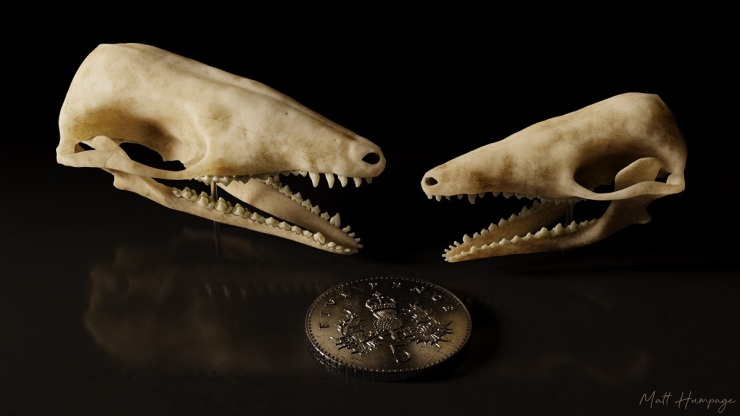By Elsa Panciroli, Research Fellow
This week my colleagues and I announced the discovery of a new species of mammal from the time of dinosaurs. It is one of two rare skeletons we’re studying from the Isle of Skye in Scotland. These mouse-like animals lived in the Middle Jurassic (166 million years ago), and tell us about the evolution of mammals in the time of dinosaurs.
The two fossils belong to Borealestes serendipitous and Borealestes cuillinensis. B. serendipitous was the first Jurassic mammal ever found in Scotland, known originally from pieces of fossil jaw found on Skye in 1971. In our new paper, we describe the skull of a partial skeleton of this species, found in 1972 by the original discoverer of the site, Dr Michael Waldman and his colleague Prof Robert Savage. But this exceptional fossil lay unstudied for over 40 years. Only now is it giving up its secrets thanks to powerful synchrotron X-ray scans, which reveal the anatomy in incredible detail.
The other fossil skeleton was found in 2018 by my colleague Prof Richard Butler. After taking it back to the lab and CT-scanning it, we realised it was a new species. We named it Borealestes cuillinensis in honour of the Cuillin mountain range on Skye (Gaelic: An Cuiltheann), a stunningly jagged set of peaks that overlooks where the discovery was made.

Most ancient mammals are only known from a few teeth and jaws, so these skeletons are exceptionally rare. They are currently the most complete Jurassic mammals described from the UK.
The Middle Jurassic is an important time in animal evolution, because it marks an increase in the diversity of lots of different groups. Just afterwards, in the Late Jurassic, there are many new species of mammals, amphibians, small reptiles and dinosaurs, which flourish into the Cretaceous period. All of this diversity began in the Middle Jurassic, but fossils from that time are rare, making it difficult to unpick the causes of these changes. This means that any material from that time period is extremely important to our understanding of the course of evolution, and the drivers of animal diversity.

Our team have been carrying out fieldwork and research on Skye for the last decade. It includes researchers from National Museums Scotland and the universities of Oxford and Birmingham. We are working on many more exciting fossils from the island, so keep an eye out for the next discovery!
Read the paper ‘New species of mammaliaform and the cranium of Borealestes (Mammaliformes: Docodonta) from the Middle Jurassic of the British Isles’ published today in the Zoological Journal of the Linnean Society.
Top image: Digital reconstruction of two Jurassic mammal skulls. (c) Matt Humpage



[…] Post al respecto: Rare Jurassic mammal fossil from Scotland is new species […]